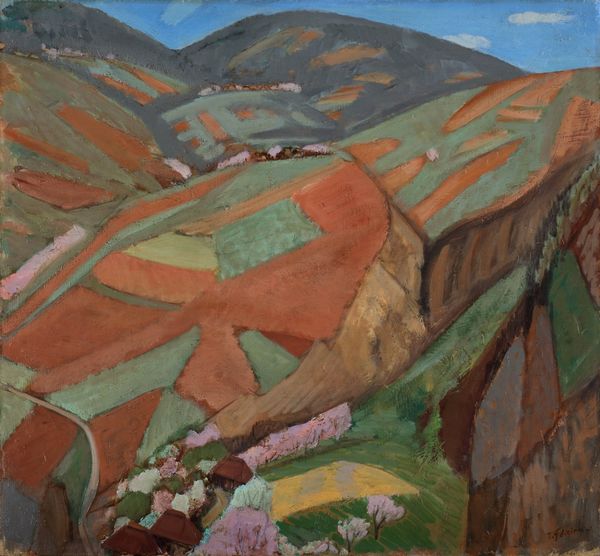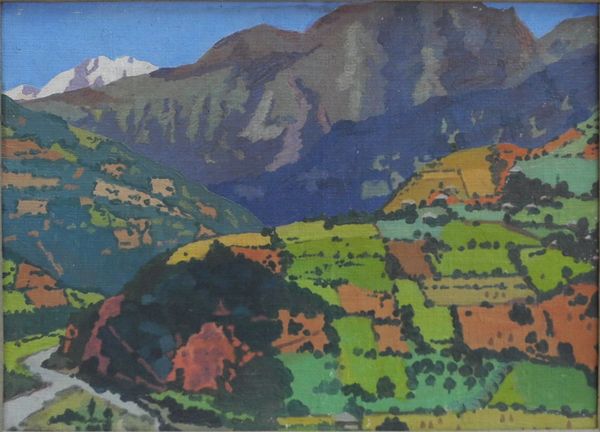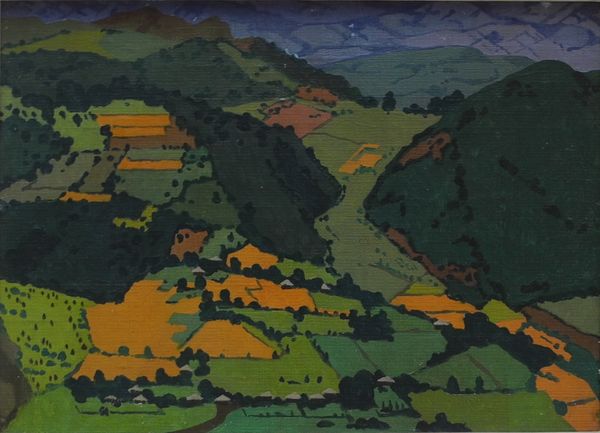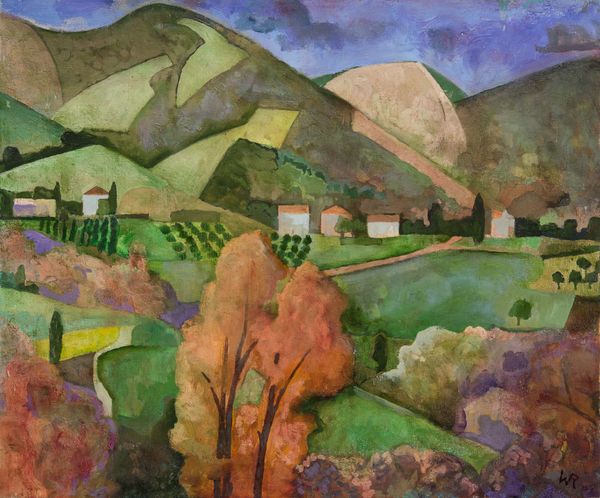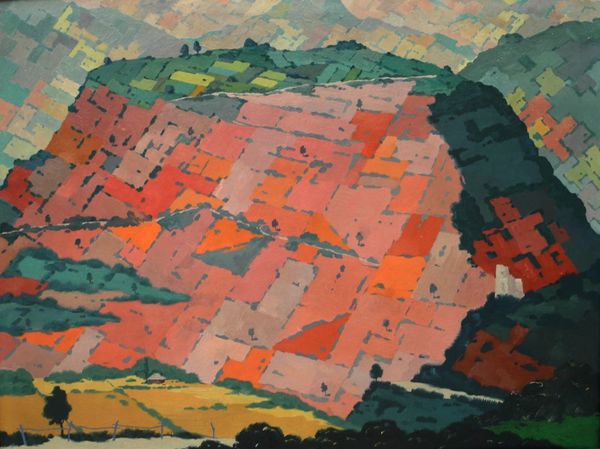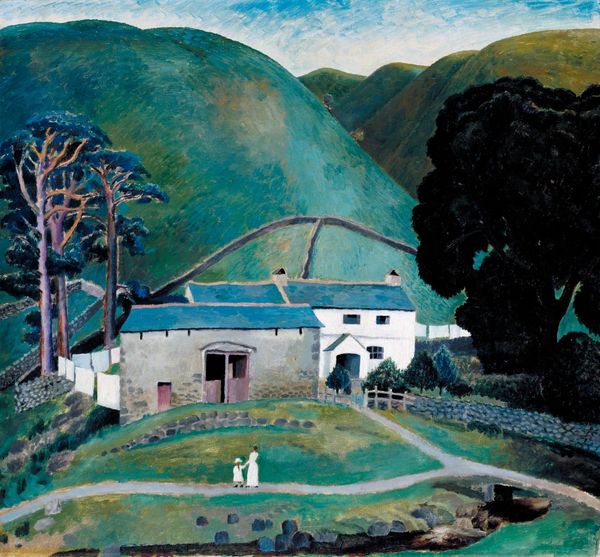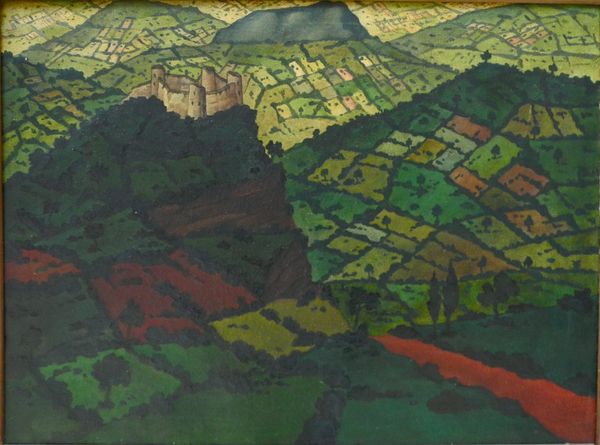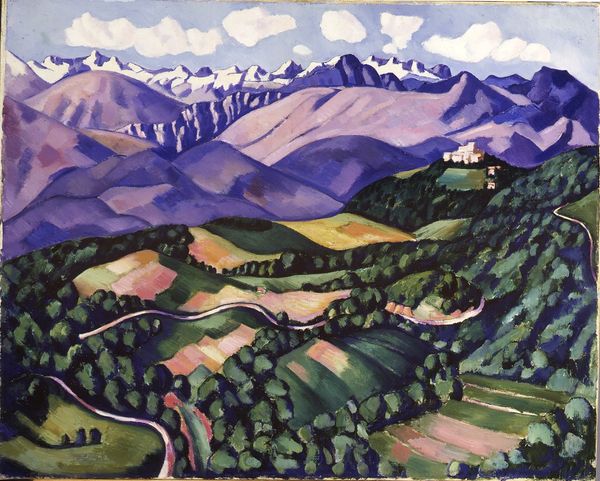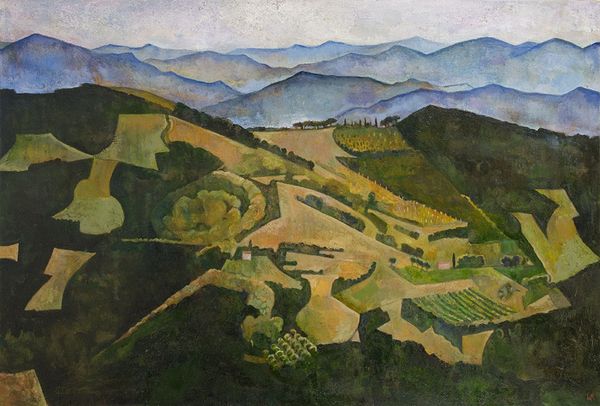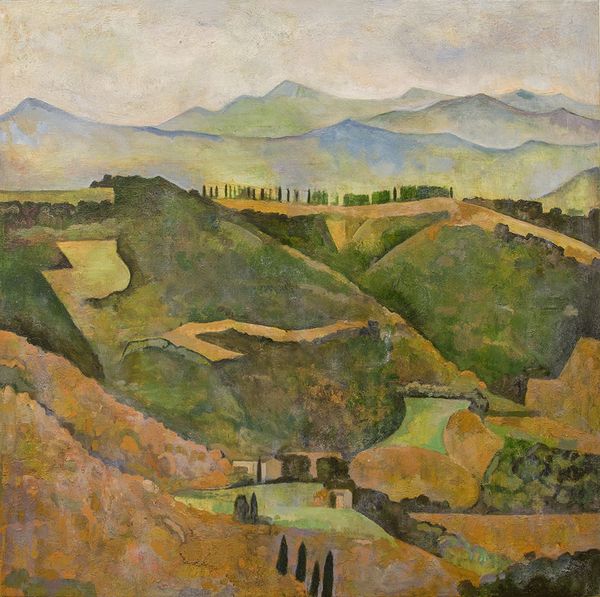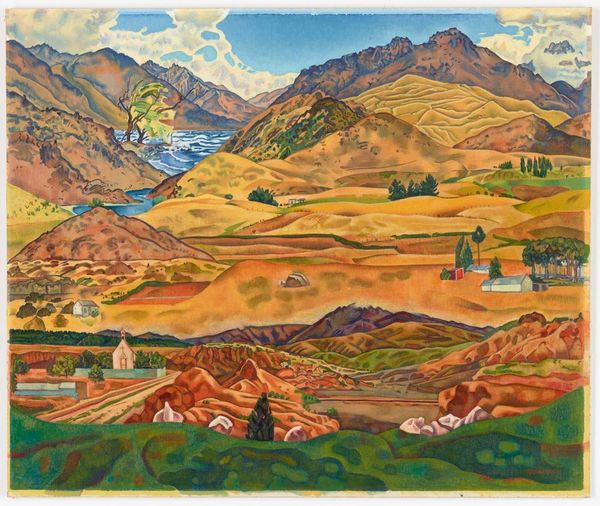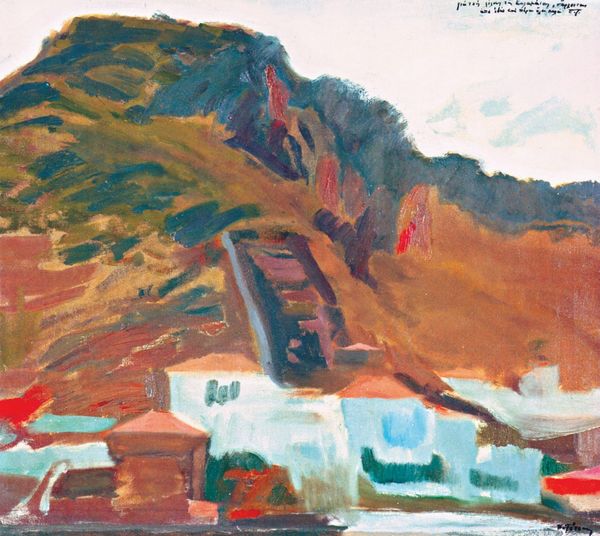
Copyright: David Kakabadze,Fair Use
Curator: Well, I’m immediately struck by the vibrancy! It feels like someone cranked up the saturation on a very beautiful postcard. A Fauvist mountain paradise meets industrial revolution… what do you think? Editor: This is "Rioni Power-Station," a 1934 oil-on-canvas piece by the Georgian artist David Kakabadze. It is currently held at the Art Museum of Georgia in Tbilisi. He seems to have been quite interested in the symbolic value of modern architecture and landscape. Curator: Right, absolutely. And for me, that geometric fragmentation is key! It makes the scene almost like a puzzle box. I wonder, does it speak to a sense of imposing control over nature, organizing it into neatly defined parcels? Or something else… a memory palace. Editor: Fascinating point! It might indeed suggest the human imposition of order. Consider how geometric shapes like triangles, often associated with aspiration, dominate the mountain forms, yet are balanced by the implied dynamism of the Fauvist brushstrokes, which, let's remember, can speak to a vitalism found only in nature. Curator: Hmm… interesting interpretation. Although these choices almost create something synthetic, perhaps the work's symbols indicate a disconnect rather than integration of the modern station to its natural surroundings. How did Kakabadze incorporate these ideas, generally? Editor: Kakabadze was deeply engaged with the avant-garde and explored the intersections of constructivism, Fauvism, and even elements of naive art to synthesize national identity with modernity. This specific piece could symbolize the promise and also the cost of progress, set against Georgia’s natural landscape. There’s tension between harmony and disruption. Curator: That interplay certainly explains the lingering disquiet! But those joyful Fauvist color palettes… I almost want to reconcile this scene… almost like building new mythologies over industrial interventions, so to speak. Thank you for the deeper insight into Kakabadze's intention and these important symbolic languages! Editor: Likewise! I feel enlightened to better understand Kakabadze’s attempt at resolving the conflict and aspiration found at the intersection of nature, identity, and industrial prowess during that era, particularly during Soviet influence in the region. This perspective only enriches my continued discovery of this artist.
Comments
No comments
Be the first to comment and join the conversation on the ultimate creative platform.
